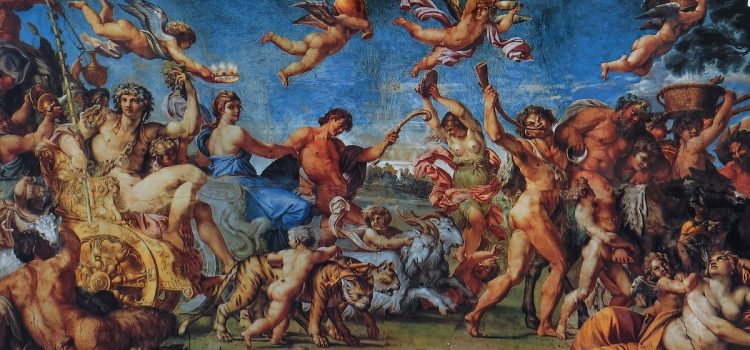
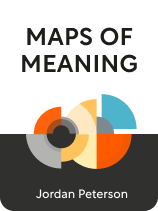
This article is an excerpt from the Shortform book guide to "Maps of Meaning" by Jordan Peterson. Shortform has the world's best summaries and analyses of books you should be reading.
Like this article? Sign up for a free trial here.
What is the purpose of myth? How can we use it as a model for life? What’s so dangerous about ideologies?
In the age of science, we’ve turned our backs on the myths our ancestors believed. In doing so, we’ve lost a crucial part of the human experience. Myth gives us the moral foundations of society and the tools for adapting to life’s challenges—and it teaches us to recognize our capacity for good and evil.
Continue reading to learn how, beneath its fanciful trappings, myth gives us meaning.
Myth’s Model for Life
What is the purpose of myth? If the Creation Story outlines the structure and reason for society, and the Hero’s Journey gives a model for coping with a dangerous world, how then do we apply these stories to our lives?
Peterson argues that personal growth is a multistage process in which we can use the roadmap provided by myth to fully realize our potential. We begin as children in a safe family unit, then leave that family to be part of our larger society. However, once we realize that society doesn’t provide all the answers, we have to strike out and find our own path. If we don’t, if we deny the possibility of growth, we fall prey to the darker aspects of human nature. Only by voluntarily challenging our beliefs can we develop into the best version of ourselves.
(Shortform note: Changing personal beliefs is difficult. Psychological research has repeatedly shown that facts aren’t enough to change people’s minds. A recent study even suggests that when people do change their beliefs, they’re often not aware that they’ve done so. Nevertheless, experts on mental well-being insist that challenging your own beliefs is essential to personal growth. In Thinking In Bets, Annie Duke highlights the value of uncertainty as a tool to examine your own belief structure. In Awaken the Giant Within, Tony Robbins insists that you can identify your own unhelpful beliefs in order to take control of your life.)
In childhood, everything is new and mysterious. Our sheltering family is the Mother of myth: all-powerful and nurturing, yet inscrutable and frightening. By imitating our parents, we make our first stories, our first mental diagrams of the narrow world that is home. However, as we get older, the wider world beckons, but we’re not yet equipped to face it alone. Society steps in and helps us transition from being a member of a family to being a part of a group.
We go off to school, we get baptized at church, and we learn the secret handshake to join the Cool Kids Club. The rite of passage is common worldwide, symbolizing death and rebirth of identity through which we’re indoctrinated into the myths of our culture. We leave the arms of the Mother to come under the rule of the mythical Father. Peterson insists that this stage is vital—being part of a group identity teaches us to value society’s needs while giving us skills essential for life that we’d never figure out on our own.
(Shortform note: Despite the perils of groupthink and mob mentality, being part of a tribe has always been crucial to long-term human survival. In The Art of Thinking Clearly, Rolf Dobelli explains that the human mind is biologically preconditioned to seek out group membership and conform to its culture. In Reinventing Organizations, Frederic Laloux says that isn’t necessarily a bad thing because the way that human groups organize themselves has evolved in step with advances in human consciousness to become more fluid and open to new ideas.)
But that’s not the end of the story. It’s inevitable that sooner or later we’re confronted by something outside our realm of experience or that of the group we’re a part of. Perhaps new immigrants have moved into town, or a group of activists is protesting an issue that’s core to our cultural values. Perhaps the threat is personal—a scientific discovery challenges a deeply held belief, you’re laid off by a trusted employer to whom you’d given your all, or maybe you fall in love with a person whom society says you shouldn’t be with.
Peterson says that, at this point, you’re given a choice—deny the challenge to your worldview and double down on seeking safety in your old identity, or discover what the challenge to your world has to teach you and forge a unique identity of your own. The latter path is that of the Hero; the former is that of the Rival. It’s in this moment of choosing right from wrong and giving meaning to that which is outside your experience that myth has its greatest power. Myth, not science, gives us the ability to create meaning out of struggle, not by providing a set of commandments, but by showing the way to grow and persevere.
| Institutional vs. Personal Belief Because we tend to view religions as institutions, which would fall into Peterson’s “group stage” of life, it may seem that a logical conclusion of his argument is that leaving religion behind is a necessary, heroic act. However, that doesn’t have to be the case. In his 1902 book The Varieties of Religious Experience, American philosopher William James differentiates between institutional religion and personal religion, while stating that personal faith, which encompasses our individual experience of the divine, is the source of the true religious experience. James suggests that a personal religion doesn’t even necessitate belief in a literal god—only an acknowledgment of the unseen forces and ideas that rule our lives. James argues that a healthy individual is one whose personal religion lets them see the duality of the world—light and dark, good and evil—and who makes the conscious decision to overcome the negative aspects of the world, much like the struggle of Peterson’s Hero. |
The Problem of Evil
The Hero’s Journey is a hard path to follow, and many people don’t take it. However, Peterson argues that hiding within the strict confines of culture is the root of the greatest evils perpetrated by the human race. Evil begins by rejecting the value of looking beyond culture’s limiting borders. It then tempts us with the pseudo-myths of ideology and relieves any moral disquiet we feel by allowing us to ally with the dark side of society, the mythical Tyrant.
Active rejection of the Hero’s journey is core to the concept of evil, great or small. That rejection is the “big lie” that everything of value has already been learned, that the old, traditional ways are always best and that any new ideas that disrupt the status quo are themselves the work of evil and should be stamped out. In particular, Peterson accuses the major world religions of undermining the true value of myth by calcifying their mythological stories into anti-science dogma, leading many people to reject religion outright, along with the moral value it brings.
(Shortform note: Many people today disagree with the premise that morality derives from religious belief. In Good Without God, Greg M. Epstein traces the history of moral doubt back to Socrates, who asked whether God defines what is good or if God is subject to a higher morality. Epstein replaces the moral value of religion with humanism—the desire for each individual to become their best self and to help others do so as well.)
The big lie of evil (the path of the Rival) leads people to find comfort in simplistic ideologies. Peterson says ideologies are pseudo-myths that deny a fundamental truth—that every person, action, object, or institution has both positive and negative aspects. At its core, an ideology states that “one way is right, all others are wrong.” The most insidious ideologies of all tell people all their problems are someone else’s fault, a belief that’s led to the worst atrocities ever committed. When large groups of people, out of fear or desperation, refuse to look beyond the safety of their culture while viewing others as an existential threat, then people who would never consider themselves evil are able to take part in acts of tyranny and genocide.
(Shortform note: The drive toward good or evil is more than a philosophical question. In The Righteous Mind, Jonathan Haidt explores the evolutionary imperative toward group behavior and the physiological mechanisms that cause us to act with empathy for our own group but not for outsiders. Haidt argues that evil ideologies such as fascism appeal directly to our “in-group” biochemistry. While mythology taps into this same biological process, it does so to build community, enable generosity, and encourage selfless behavior.)
The Moral of the Story
The secret, then, to living a moral life isn’t in following a strict set of rules. The strength of seeing the world through a mythic lens is that it helps you recognize when those rules aren’t enough. Peterson states that, by understanding the true lessons of mythology, you can inoculate yourself against ideology’s temptations while mentally preparing yourself to face the unexpected and the unfamiliar with curiosity instead of fear.
As opposed to narrow-minded views of the world, mythology teaches that all things are both creative and destructive, including ourselves. Nature is beautiful, majestic, and verdant, but it’s also savage, cruel, and heartless. Society protects us by creating order and enabling people to work for the common good, but it also lets the few oppress the many and can often stifle innovation. Individuals can be generous and kind, but they can also be selfish and sadistic. The oldest, deepest myths don’t view the world in black and white, but as a cyclical balance between the two. Myth teaches that, within us, we can find both the Hero and the Rival.
Likewise, when you emulate the Hero’s Journey, you cultivate a sense of curiosity and wonder about the many things in life beyond the walls of your personal world. Peterson proposes that this particular spark—the willingness to set aside safety and comfort to explore the mysteries of life—is the essence of the divine that exists in each of us. By fanning the flames of curiosity, you become like the Hero, enriching yourself and the world.
(Shortform note: Most definitions of “divinity” explicitly relate it to qualities of godly origin, though yoga practitioners attribute divine qualities to the mental and spiritual essence of the individual, much as Peterson does. In The Untethered Soul, Michael A. Singer argues that a personal connection to the divine can only be found through your inner experience. In Homo Deus, Yuval Noah Harari defines divinity as the ultimate goal of the human race, which will not be achieved through supernatural means but by reaching our highest potential as a species.)
| The Power of Love Peterson presents the Heroic Journey as mythology’s model for living a good life. However, Joseph Campbell offers an alternate path in his essay “The Mythology of Love,” appearing in his book Myths to Live By. Campbell argues that mythological depictions and concepts of love represent a transcending of individual experience to bridge the gap between people and cultures, or even between the mortal and the divine. The divide is crossed not by conquest and assimilation of ideas, as in the Hero’s Journey, but by the marriage of hearts and minds. In conversation with Bill Moyer in the television program The Power of Myth, Campbell points out that the emergence of the value of romantic love was originally a threatening concept to both Eastern and Western institutions. However, Campbell elucidates that myths about the expression of love, from ancient times to the age of chivalry, drive home the importance of living an authentic life, including love for oneself, one’s enemies, and all humanity. |

———End of Preview———
Like what you just read? Read the rest of the world's best book summary and analysis of Jordan Peterson's "Maps of Meaning" at Shortform.
Here's what you'll find in our full Maps of Meaning summary:
- Why myths are vital to how humans confront and make sense of a chaotic world
- How to apply the lessons of myth to live a more well-rounded life
- How the findings of neuroscience are echoed in the structure of our most ancient tales


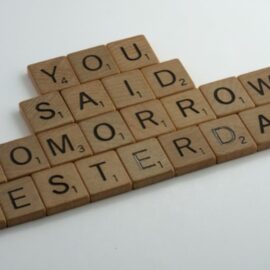

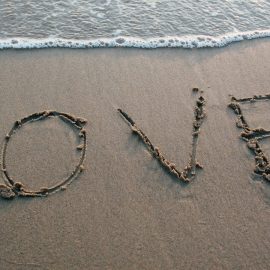
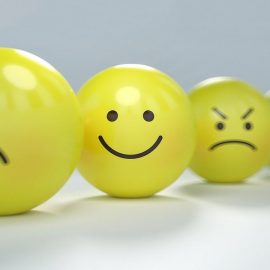

Hello. Thank you for always good blog